Amaro Toddy Vs Hot Toddy: What's The Difference?
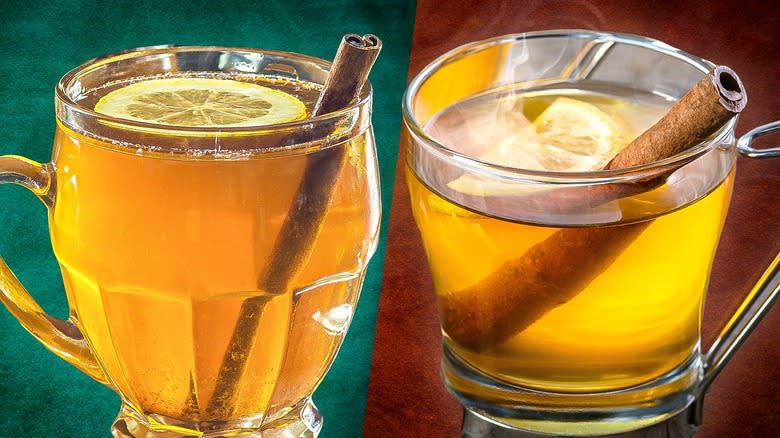
Picture a cocktail, and a cool, refreshing, and strong alcoholic beverage likely comes to mind. However, heating up the drink can yield a delectable result, too, while still preserving complexity. And when it comes to a sipper fit for a winter night, none are more classic than a hot toddy. This pairing of booze, lemon, honey, sugar, and hot water has stood the test of time, prepared for centuries.
With mixology's constant experimentation, the hot drink formula has also been pushed into new realms. Bartenders drew from the Italian Amaro Caldo -- crafted with a digestif and hot water -- to translate these fragrant liqueurs to the toddy formula. Boasting unique flavors, varied possibilities, and easy malleability, the Amaro toddy turns heads in the heated cocktail realm. So, how is this newer rendition crafted, and what's the difference from the classic? Let's dive into the details of these two toddy types.
Read more: The 40 Absolute Best Cocktails That Feature Only 2 Ingredients
What Is An Amaro Toddy?
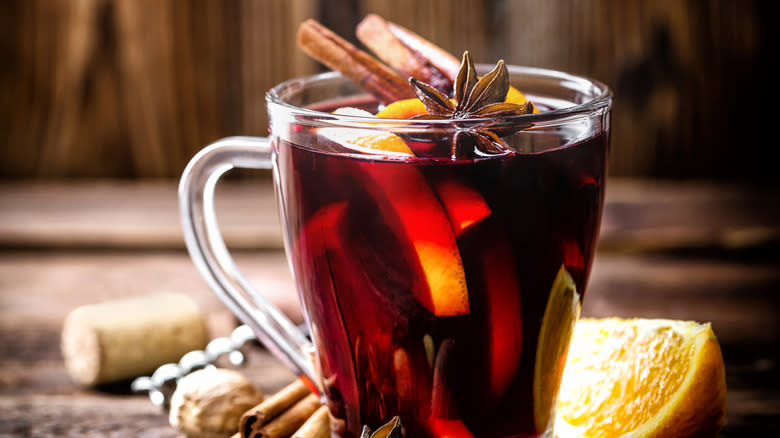
An amaro toddy pairs a bitter liqueur with boiling water to form a wondrously aromatic hot cocktail. It all lies in the complexity of the amaro; these Italian digestifs pack in an expansive range of flavors. Each bottle integrates up to several dozen ingredients, utilizing everything from spices to berries, roots, and even artichoke -- in the case of Cynar. Typically brandy-based, these intoxicants are often enjoyed straight or in cocktails, but they especially bloom when diluted with hot water.
The digestif expands into a complex array of flavors while becoming more sippable. Some exemplars imbue the toddy with a palatably bitter note, while others instill fruity, herbal, and sweet flavors. Common amaro choices include Ramazzotti, which brings a berry and chocolate flavor, or Averna -- a liqueur packed with citrus and caramel. However, classics like Campari can be employed, too; toddy renditions with the iconic red liqueur are popular in Japan.
In addition to varying the alcohol, amaro toddies frequently incorporate varying fragrant additions. From honey to citrus zests and additional spices like cinnamon, black pepper, and clove, the drink is a blank canvas for fragrant deviations. Or, simply pour in around twice as much hot water to booze and stir -- a richly flavored cocktail with hues of red, purple, or orange will arise.
What Is A Hot Toddy?
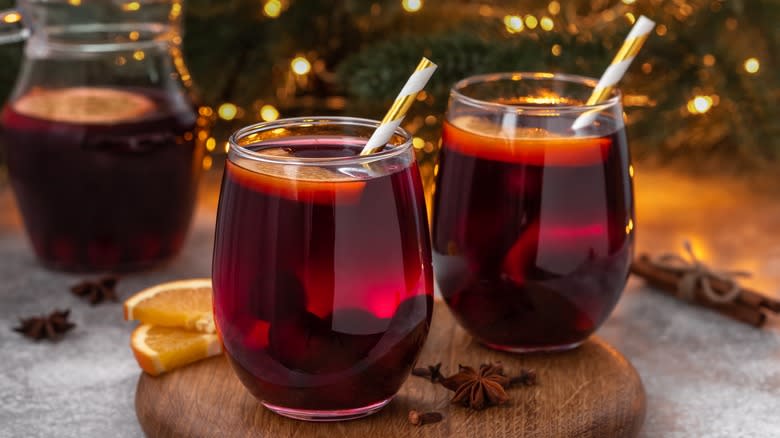
Few warm cocktails have the iconic status of a hot toddy. The drink blends variable proportions of a barrel-aged spirit -- most commonly whiskey -- with lemon juice, boiling water, and spices. Such a straightforward yet delicious combination has existed for centuries, first noted in print during the late 18th century. The drink arose in Britain, where spices from the colonial holdings mingled with homegrown spirits, especially Scotch. It didn't take long for the toddy to adopt remedial associations. While alcohol won't boost health, the lemon, honey, and hot water combo has shown some benefits, notes Healthline.
The hot toddy encompasses endless variations. Firstly, there's malleability in the utilized base; nearly any barrel-aged spirit will do, including rum, brandy, and more. The sweetener can be altered, too -- while honey is the most classic, other syrups are also used. And finally, additional garnishes and spices open up limitless possibilities. Classic winter spices like cinnamon, ginger, and cloves are common additions. However, others instill a brighter character, adding varying juices and even slices of fresh fruit. The result is a beautifully amber-colored beverage garnished with aromatics.
A Hot Toddy Typically Employs More Sugar Than An Amaro Toddy
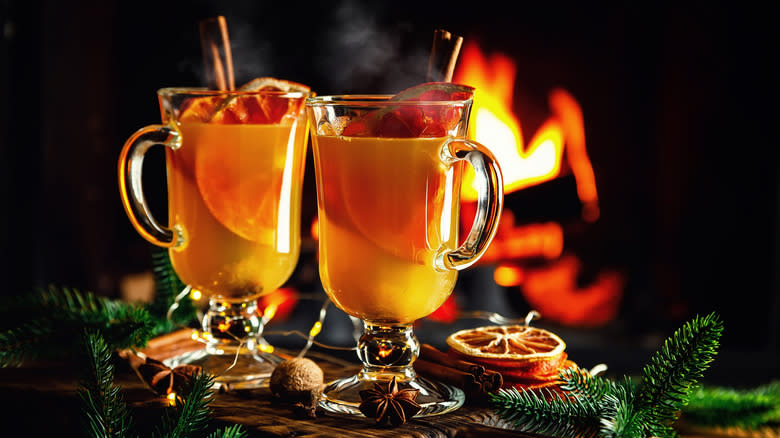
When crafting a hot toddy, sweetness is a cornerstone; like in other cocktails, it rounds out the drink and offers a tasty flavor. Plus, sugar and whiskey is an esteemed pairing -- noted in classics like the old fashioned and whiskey sour. As a result, the hot toddy often experiments with varying syrups, using them as vessels for additional flavors. During preparation, a substantial ratio of the sweetener is employed, up to three-quarters of an ounce per two-ounce shot of alcohol.
Conversely, an amaro toddy offers a more bitter-leaning character, upheld by its liqueur base. Since the alcohol employed is less boozy, it's less necessary to counteract with additional sweetness. Plus, many amaros are intrinsically bittersweet, so they'll create a balanced toddy without further ingredients. Most crucially, it depends on which liqueur is utilized -- each introduces a different palate. From such a flavor foundation, recipes add variable amounts of syrups, usually in smaller quantities, like half a teaspoon.
Some Toddies Blur The Lines Between The Two Styles
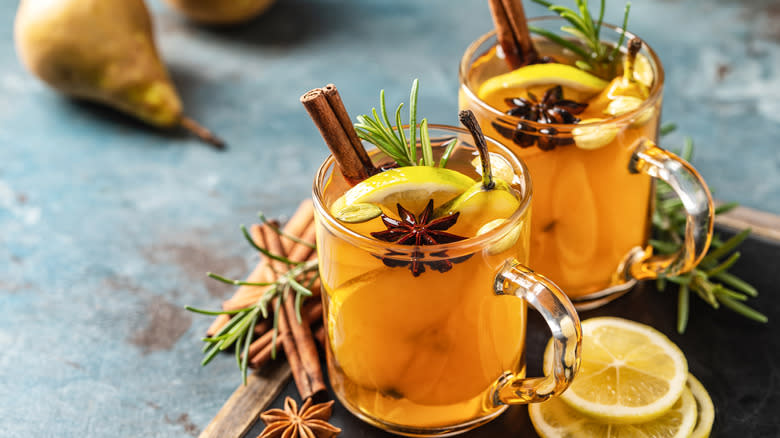
Classically prepared renditions of the two toddies are distinct, both in flavor and appearance. However, integrating characteristics from both is common with the drink's ease of malleability. Some bartenders employ equal parts of amaro and a dark-barrel-aged spirit, rounding out with lemon. Others innovate into further flavors, matching everything from spiced rum to aged cachaça with varying amaros, yielding results that further blur both styles.
And given how well many varying alcohols respond to hot water dilution, some toddy renditions create a drink wholly unique. Hot negronis are catching on -- retaining relatively faithful proportions of Campari and gin. Such elaborations open the door for additional fruit liqueurs, infusing the hot drinks with boozy notes from an expansive selection. After all, with the addition of hot water as the toddy's only definitive element, the drink is open to reimagination. So why categorize whenever the aim is simply a drink that's enjoyable to sip on?
Read the original article on Tasting Table.

